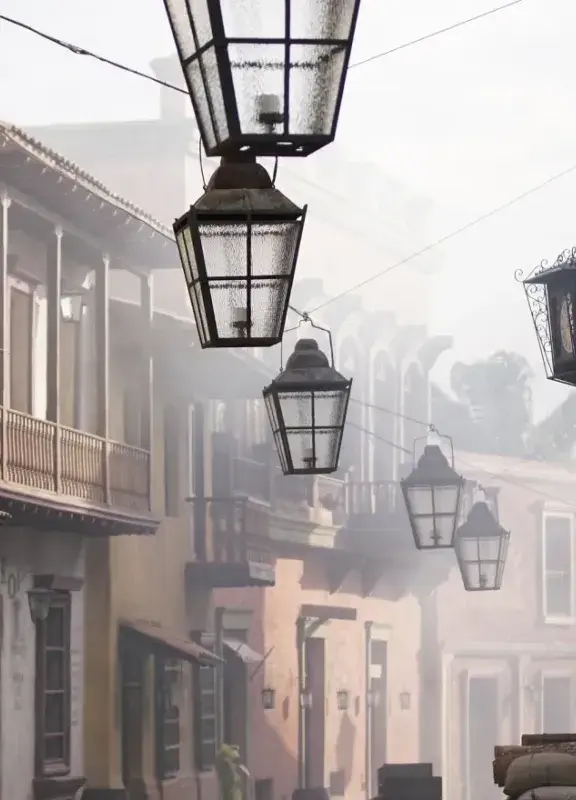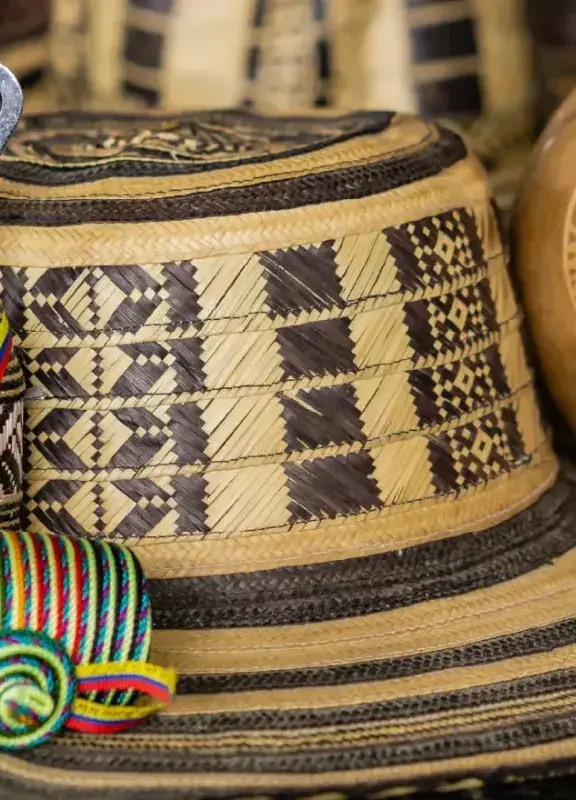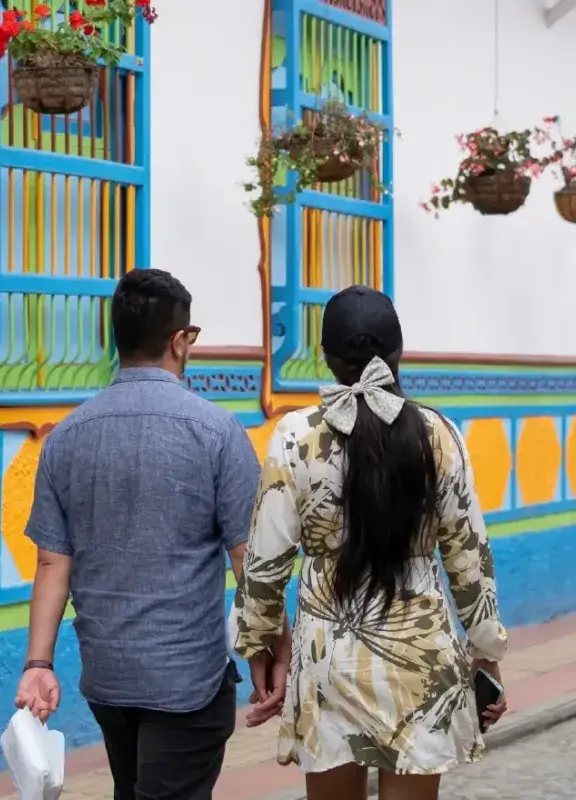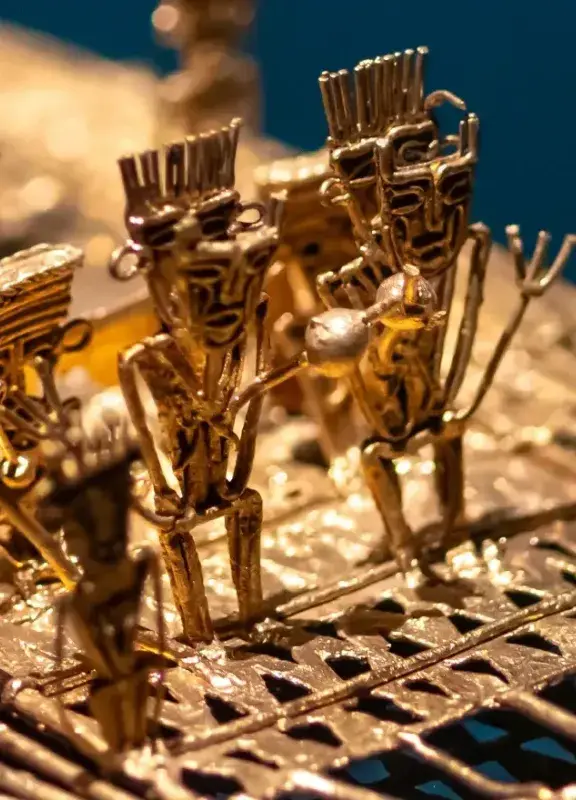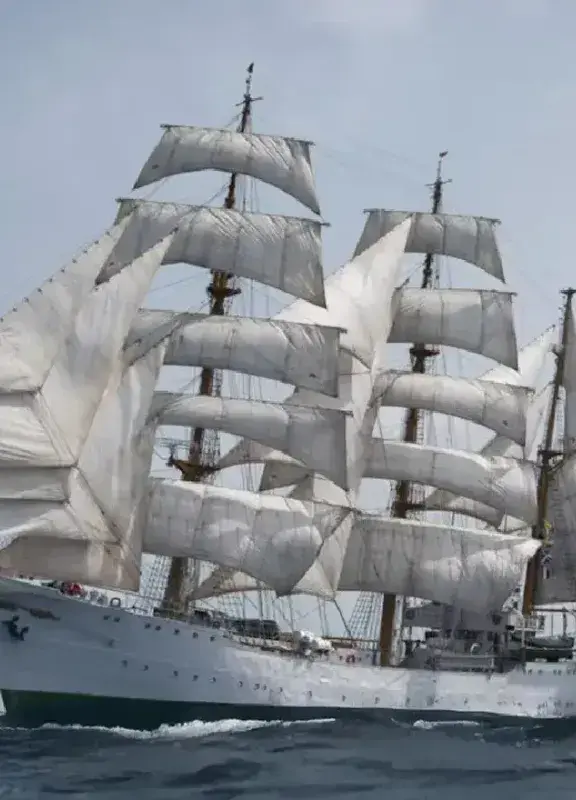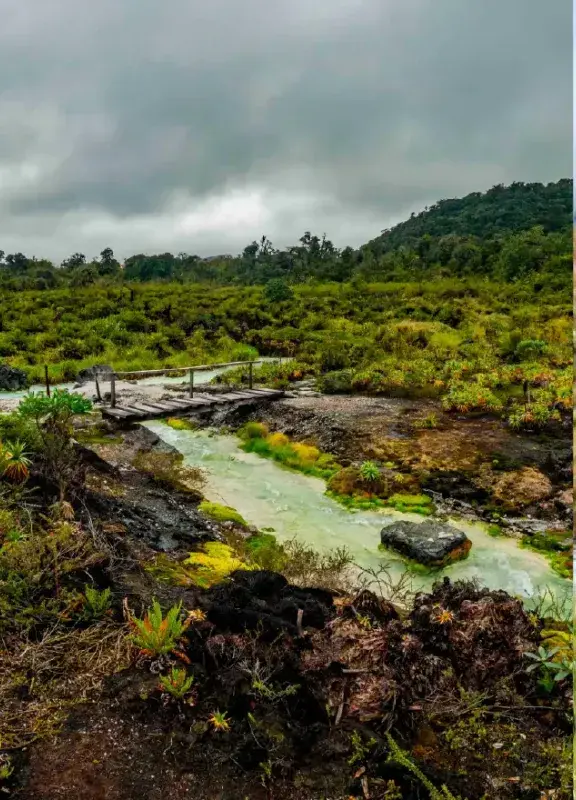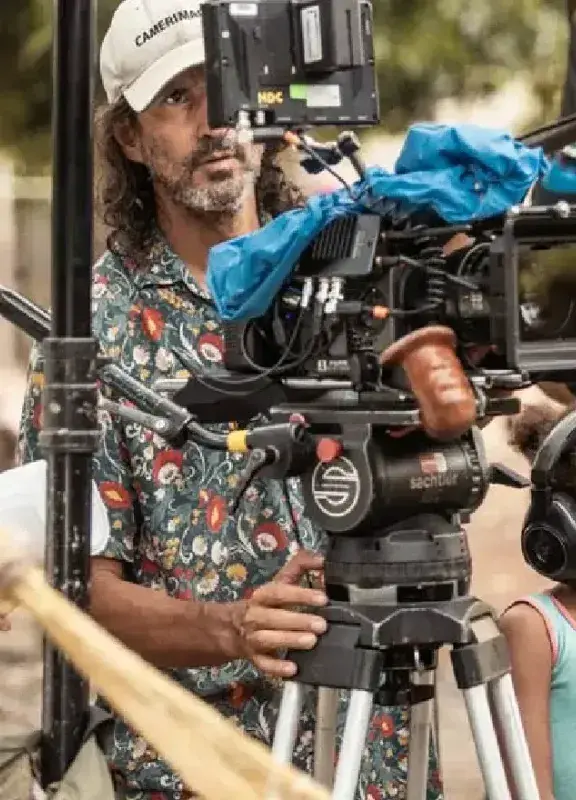National symbols representing Colombia
The national symbols of Colombia embody a historical and cultural legacy worthy of recognition. The flag, the coat of arms, and the anthem represent the country’s political history, while the Andean condor, the wax palm, and the orchid, Colombia’s national flower, exalt the nation’s natural and cultural richness.
The Flag of Colombia
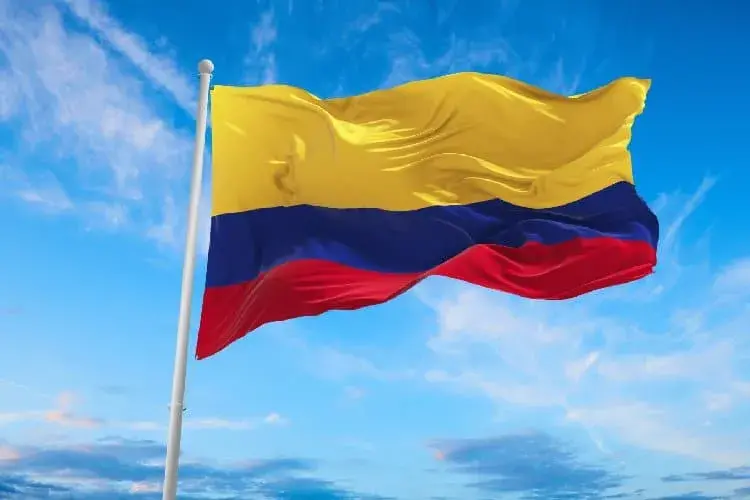
In 1807, Francisco Miranda, one of the forerunners of national independence, coined the colors yellow, blue, and red to represent the territory then on its path to independence. Four years later, the flag was adopted as the insignia of Gran Colombia, and in 1813 it was ratified by the liberator Simón Bolívar. In 1861, it was decreed that the stripes would be horizontal and that yellow would occupy the upper half of the flag. Regarding the origin of the colors, there are several versions, but the most widely accepted in Colombia is that yellow symbolizes the nation’s natural wealth, blue the seas, and red the blood shed by the heroes of independence. Flag Day is celebrated on August 7.
What does the Colombian flag mean?
- Yellow: represents the wealth of Colombian soil, as well as the sun, a source of light, and sovereignty, harmony, and justice.
- Blue: represents the sky that covers the homeland, the rivers, and the two oceans that border Colombian territory.
- Red: represents the blood shed by patriots on the battlefields to achieve freedom, symbolizing love, power, strength, and progress.
The Coat of Arms of Colombia
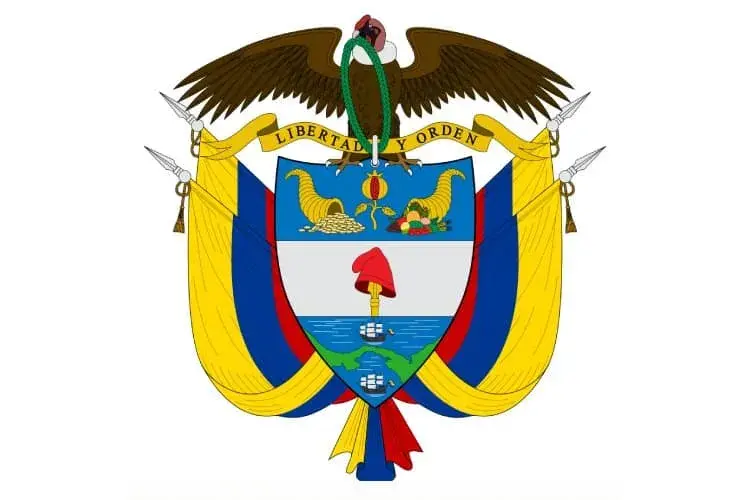
Although the first national coat of arms was established by Charles V in 1548, it was not until 1834 that the then president of the Republic of New Granada, General Francisco de Paula Santander, established the emblem we know today. The coat of arms includes distinctive elements of Colombia such as the majestic Andean condor, which carries a ribbon with the motto Liberty and Order.
What does the Colombian coat of arms mean?
"The Coat of Arms of the Republic of Colombia consists of three horizontal sections. The Condor symbolizes freedom, represented facing forward with outstretched wings and looking to the right; from its beak hangs a green laurel wreath and a flowing ribbon; attached to the shield and intertwined in the crown appear, in gold background and black letters, the words Liberty and Order. In the upper third of the shield, on a blue background, there is a golden open pomegranate with stem and leaves of the same metal, recalling New Granada, the name the country bore in the 19th century.
On both sides are two horns: the one on the right with gold and silver coins, and the one on the left with tropical fruits. These horns symbolize the wealth and abundance of national soil. In the middle, on a platinum background, sits the Phrygian cap, which symbolizes freedom. In the lower third, on marine waters, two ships with unfurled sails appear, one on each side of the Isthmus of Panama, which belonged to Colombia until November 3, 1903. The unfurled sails signify Colombia’s trade with other countries of the world." enciclopedia.us.es
Anthem of Colombia
Who wrote the Colombian anthem?
Composed in 1887 by Rafael Núñez, the anthem was officially proclaimed in 1920 by President Marco Fidel Suárez. Musically composed by Italian Oreste Sindici, it is said to be the second most beautiful anthem in the world, after the French Marseillaise. Find the full Colombian anthem here. Listen to the Colombian Anthem here.
Other Colombian National Symbols
Colombia also has other national emblems such as the majestic Andean condor (Vultur gryphus), a symbol of sovereignty since 1834; the wax palm of Quindío (Ceroxylon quindiuense), found only in our country and capable of reaching up to 70 meters in height; and the orchid (Cattleya trianae), the national flower.

 Welcome, you are in
Welcome, you are in 



